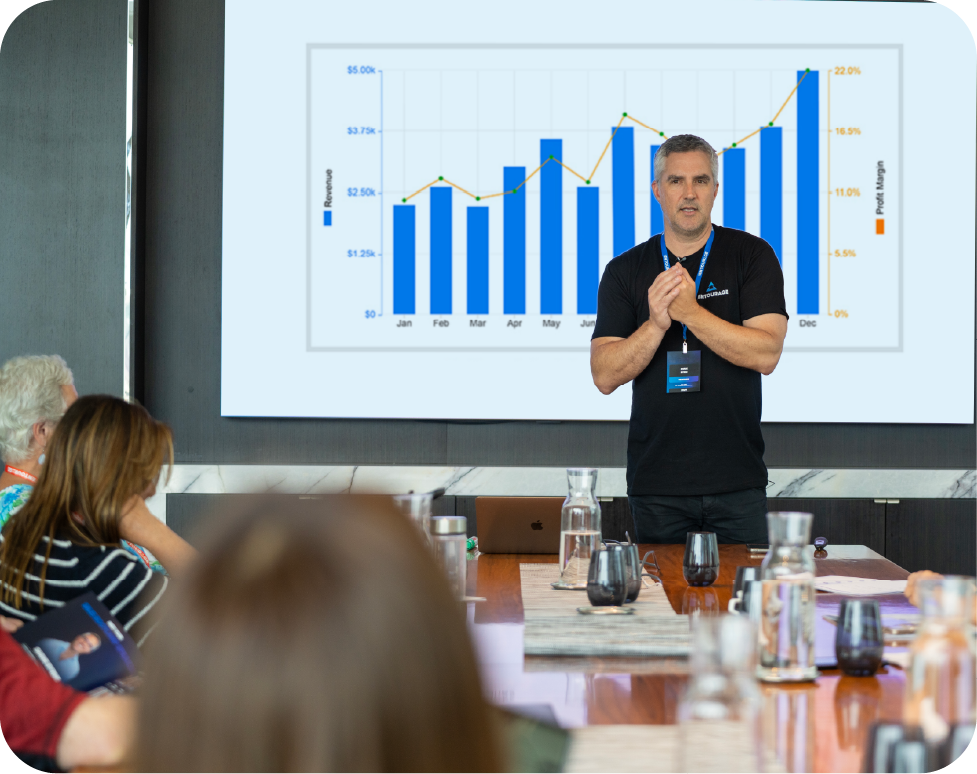Cash is king but so many business owners aren't effectively managing their cash flow.
Being able to do this is the key to the long term survival of your business, allowing you to operate through quiet periods, downturns, and any unexpected challenges.
By keeping your finger on the pulse, you'll be able to confidently make the right long-term decisions for your business. So, what's one key way to help improve the cash flow in your business?
The Cash Conversion Cycle
This is the number one metric that all businesses with inventory should consider.
The Cash Conversion Cycle (CCC) is a metric that shows the amount of time it takes a company to convert its investments in inventory to cash.
As with other cash flow calculations, the shorter the cash conversion cycle, the better the company is at selling inventories and recovering cash from these sales while paying suppliers.
The cash conversion cycle formula is as follows:
Cash Conversion Cycle = DIO + DSO – DPO
What exactly does that mean and how do you calculate it?
- DIO stands for Days Inventory Outstanding
- DSO stands for Days Sales Outstanding
- DPO stands for Days Payable Outstanding
Days Inventory Outstanding (DIO)
Days Inventory Outstanding (DIO) is the number of days, on average, it takes a company to turn its inventory into sales.
Essentially, DIO is the average number of days that a company holds its inventory before selling it.
%20.png?width=512&height=99&name=Days%20inventory%20outstanding%20(DIO)%20.png)
What is Days Sales Outstanding (DSO)
Days Sales Outstanding (DSO) is the number of days, on average, it takes a company to collect its receivables.
Therefore, DSO measures the average number of days for a company to collect payment after a sale.
.png?width=512&height=82&name=Days%20sales%20outstanding%20(DSO).png)
What are Days Payable Outstanding (DPO)
Days Payable Outstanding (DPO) is the number of days, on average, it takes a company to pay back its payables.
Therefore, DPO measures the average number of days for a company to pay its invoices from trade creditors, i.e., suppliers..png?width=512&height=87&name=Days%20payable%20outstanding%20(DPO).png)
Putting it together: the Cash Conversion Cycle
Recall that the Cash Conversion Cycle Formula = DIO + DSO – DPO.
We can break the cash cycle into three distinct parts: (1) DIO, (2) DSO, and (3) DPO. The first part, using days inventory outstanding, measures how long it will take the company to sell its inventory. The second part, using days sales outstanding, measures the amount of time it takes to collect cash from these sales.
The last part, using days payable outstanding, measures the amount of time it takes for the company to pay off its suppliers. Therefore, the cash conversion cycle is a cycle where the company purchases inventory, sells the inventory on credit, and collects the accounts receivable and turns them into cash.
How do we interpret it?
The CCC formula is aimed at assessing how efficiently your company is managing its working capital. As with other cash flow calculations, the shorter the cash conversion cycle, the better your company is at selling inventories and recovering cash from these sales while paying suppliers.
This formula should be compared to companies operating in the same industry and conducted on a trend. For example, measuring a company’s conversion cycle to its cycles in previous years can help with gauging whether its working capital management is deteriorating or improving.
In addition, comparing the cycle of your company to your competitors can help with determining whether your company’s cash conversion cycle is “normal” compared to industry competitors.
Need more help?
If you need any help with the financial management of your business, book in a free 30 minute session with one of our client services managers. In just 30 minutes you’ll be able to diagnose how your business is going right now, discuss any challenges you are currently facing, and talk about what you can do to improve the financial health of your business.
Related Categories
John Liu
John Liu is the current GM of
The Entourage's Accounting and Advisory Services has over 15 years of experience as a finance director across numerous industries including FMCG, retail, luxury goods, pharmaceutical and entertainment. He has also worked in regions spanning SE Asia, APAC and the UK giving him the depth of knowledge and skills that are necessary when mapping out solutions for businesses. John has extensive experience in the areas of strategic planning and execution, financial control, data analysis and process improvement. He has orchestrated and led numerous programs whilst working with global companies such as Unilever, Paramount Pictures and Johnson & Johnson improving their market/category share and profitability.
John’s key strengths are working with companies to develop business strategies that are tested and aligned with action plans that deliver long term value. He uses a combination of strategic and operational finance methods to ensure that programs and processes are tracked and measured in such a way that enables executives to manage risk and capitalise on opportunities.





